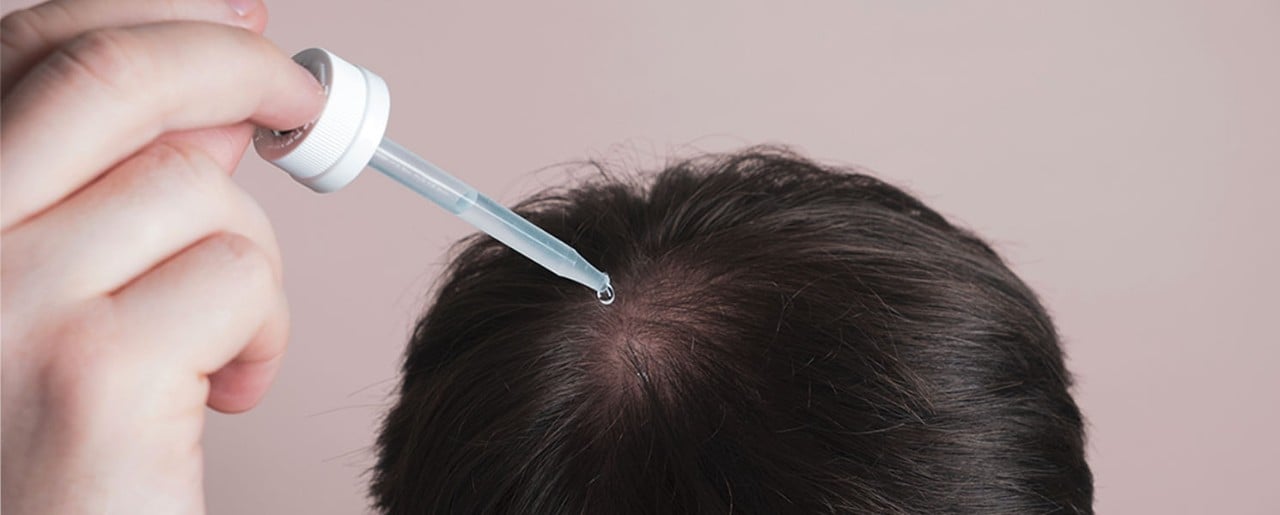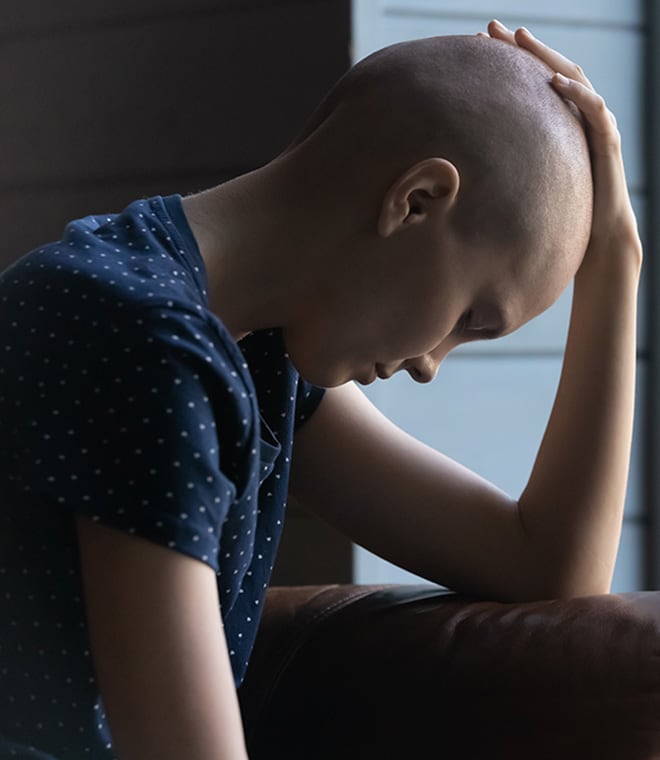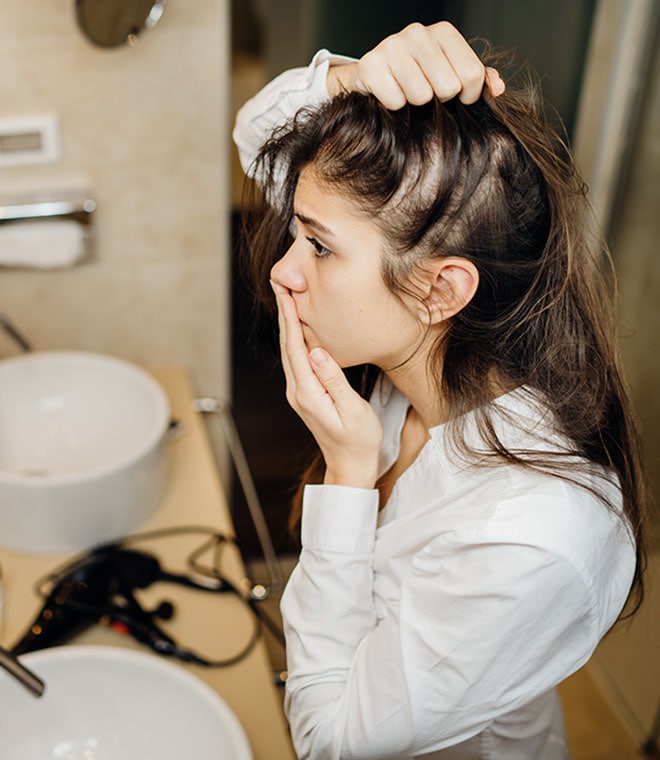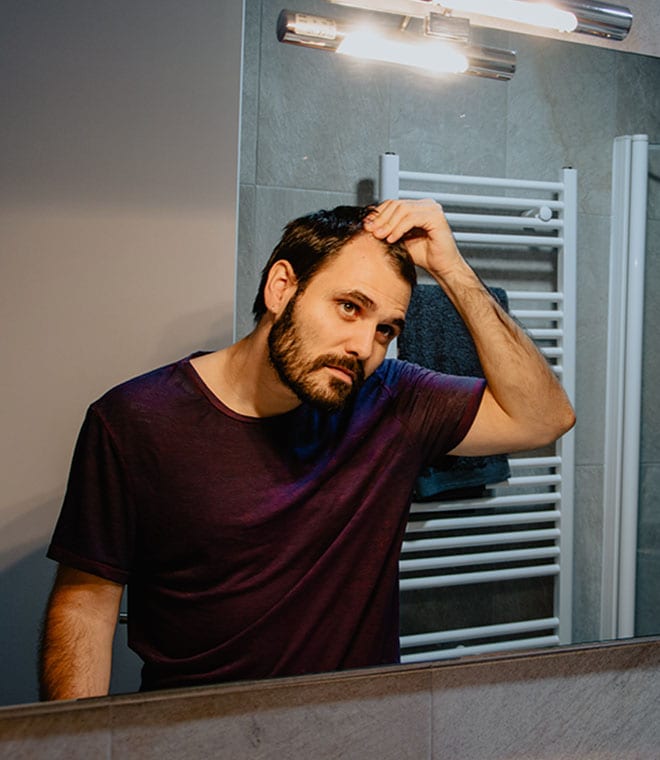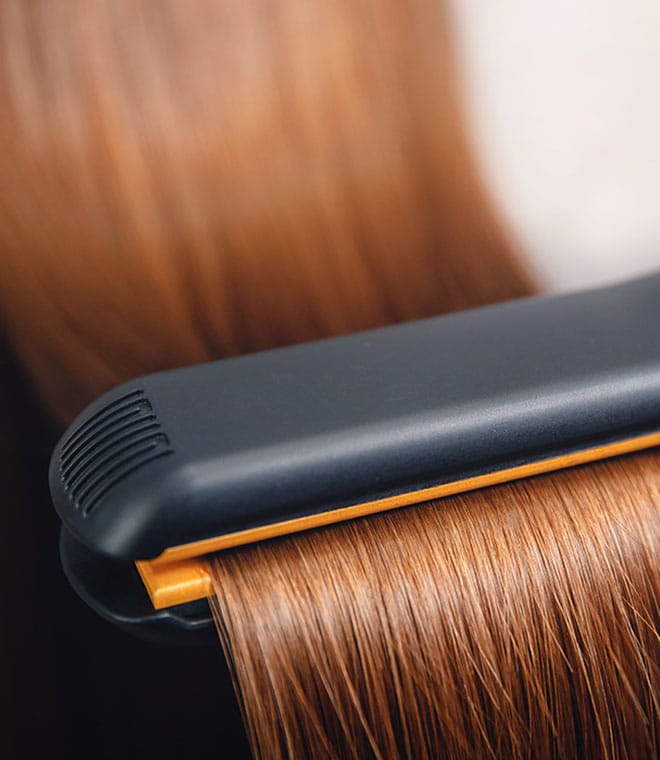Health
Bald spot treatments: What are my options?
By Anna H. Chacon, MD, Fellow of the American Academy of Dermatology Jan 27, 2025 • 8 min
Although a bald spot is a distressing problem that can impact your appearance and self-confidence, treatments can make a difference. There are at-home interventions, medications and other treatments that may be effective for your specific type of hair loss.
Common treatments for bald spots
Because many types of hair loss exist, there is a wide range of potential treatments for a bald spot. Some treatments are effective for a specific form of hair loss, while others can benefit people with hair loss due to a number of causes.
Minoxidil
Available as an over-the-counter scalp treatment, minoxidil is one of the most common treatments for bald spots because it's often effective at preventing further hair loss and stimulating growth. The topical medication comes in both liquid and foam forms. Normally, minoxidil is applied two or three times daily. Follow your healthcare provider’s instructions as well as the directions provided on the product package carefully. People who benefit from the medication typically begin to see regrowth within three to six months of using minoxidil as directed. In most cases, you need to continue using the treatment to maintain growth. Minoxidil is available in different strengths topically for men and women. It’s also available as a prescription oral medication.
Finasteride
The FDA has approved the oral medication finasteride for men with male pattern baldness. Like minoxidil, finasteride may slow down the progression of hair loss and promote new growth around a bald spot. Most people take finasteride once every day. Healthcare providers recommend taking the medication at the same time daily.
Spironolactone
For hereditary hair loss in women, healthcare providers may prescribe an oral medication called spironolactone. About 40% of women who take this medication experience an increase in hair thickness and a reduction of hair loss. This medicine is not safe for pregnant women. If you plan to become pregnant in the near future, your healthcare provider will likely not prescribe spironolactone.
Anthralin
Healthcare providers typically prescribe anthralin for psoriasis, autoimmune hair loss and some other causes of bald spots. Anthralin is typically applied as a shampoo or cream and allowed to rest on the scalp as directed before it is washed off. Anthralin may cause redness and irritation. In rare cases, it can trigger a skin rash.
Corticosteroids
When a bald spot is due to inflammation or an autoimmune disorder, healthcare providers may recommend corticosteroids. These drugs work by suppressing immune activity and easing inflammation. Your healthcare provider may opt to give you a corticosteroid injection directly into the bald spot area once every four to eight weeks. This may encourage regrowth. However, in some cases, the benefits are only temporary and hair loss may resume after injections stop. Topical and oral corticosteroids are also potential treatments, depending on the cause and severity of the bald spot.
With long-term use, oral corticosteroids can cause side effects like high blood pressure, weight gain and vision problems. As a result, they may not be appropriate for everyone. Your healthcare provider will likely want to monitor you with regular checkups while you're taking steroid medications for hair loss.
Antifungal medications
A type of fungal infection called ringworm can cause bald spots. If your healthcare provider determines that you have this infection, they may prescribe an oral antifungal medication, such as:
- Fluconazole
- Griseofulvin
- Itraconazole
- Terbinafine
Typically, you will need to take the medication for one to three months to eliminate the infection. Once the infection resolves, you will likely see regrowth in the bald spot area. There are antifungal creams, powders and lotions available for purchase over the counter, but these products typically don't work for ringworm located on the scalp.
Dietary supplements
A deficiency in vitamins and minerals like iron, vitamin D and zinc may trigger hair loss. Blood work ordered by your healthcare provider can determine if you are suffering from nutritional deficiencies. Your healthcare provider may recommend that you take a dietary supplement with an appropriate dose, which may also help support new growth in the bald spot area.
Laser therapy
Although still considered an experimental treatment, laser therapy may help stimulate hair regrowth in some people. You can purchase a cap or comb and perform treatments at home. Proponents of laser therapy believe that exposing the skin to laser light stimulates the hair follicles to encourage growth.
Microneedling
Another experimental treatment for bald spots is microneedling, which can be performed at home with a device that features hundreds of very small needles. Some studies suggest that microneedling may stimulate growth in people who have hereditary hair loss. However, it can also worsen other scalp conditions. Healthcare providers often recommend microneedling as a secondary treatment to complement minoxidil or platelet-rich plasma therapy.
Platelet-rich plasma
Injections of platelet-rich plasma (PRP) are sometimes administered for the treatment of hair loss. This involves drawing a blood sample, separating out a component of your blood called plasma and then administering it into your scalp as an injection. Healthcare providers usually administer PRP every three to six months. You will likely need more than one injection before hair loss slows and regrowth begins.
Hair replacement surgery
Hair replacement surgery may provide a permanent solution for some people with hair loss. There are four different types of procedures commonly performed:
- Hair transplants involve removing scalp grafts from areas where hair growth still occurs and then surgically transferring them to the bald spot area.
- Tissue expansion involves placing an expander device underneath a scalp area with existing hair growth near a bald spot to try to stimulate the growth of new hair-producing cells. Once this occurs, a second surgical procedure places the new skin over the bald spot.
- Flap surgery involves removing the bald spot and then pulling hair-bearing skin over the top.
- Scalp reduction (also sometimes referred to as advancement flap surgery) can be used to treat bald spots on the back of the head and involves removing the bald area and then pulling a flap of hair-growing scalp forward to cover certain areas of the head including the crown, top, and back.
All types of hair replacement surgery can lead to complications, such as:
- Infections
- Failed grafts
- Uneven or patchy growth
- Scarring
- Bleeding
Not everyone is a candidate for hair replacement surgery.
The first step in choosing the best treatment option for bald spots is to understand the cause of your hair loss, which may likely require a visit to your healthcare provider. They can perform or order diagnostic tests and evaluate your symptoms to help determine the cause of your hair loss. Based on the findings of the testing and examination, your healthcare provider can recommend the best treatment options for your specific needs.
Updated by Julie McDaniel, MSN, RN, CRNI, January 2025.
Sources:
- https://medlineplus.gov/ency/article/003246.htm
- https://www.aad.org/public/diseases/hair-loss/treatment/diagnosis-treat
- https://www.aad.org/public/diseases/hair-loss/treatment/tips
- https://www.ncbi.nlm.nih.gov/books/NBK538178/
- https://www.cdc.gov/ringworm/treatment/?CDC_AAref_Val=https://www.cdc.gov/fungal/diseases/ringworm/treatment.html
- https://www.plasticsurgery.org/cosmetic-procedures/hair-transplantation-and-restoration
- https://www.merckmanuals.com/professional/searchresults?query=anthralin
- https://www.merckmanuals.com/professional/searchresults?query=minoxidil
- https://www.aad.org/public/diseases/hair-loss/treatment/transplant
- https://www.health.harvard.edu/diseases-and-conditions/its-not-too-late-to-save-thinning-hair
- https://www.uptodate.com/contents/finasteride-drug-information
- https://www.lung.org/blog/corticosteroid-use-risks
- https://www.plasticsurgery.org/cosmetic-procedures/hair-transplantation-and-restoration/procedure
- https://www.plasticsurgery.org/cosmetic-procedures/hair-transplantation-and-restoration/safety
